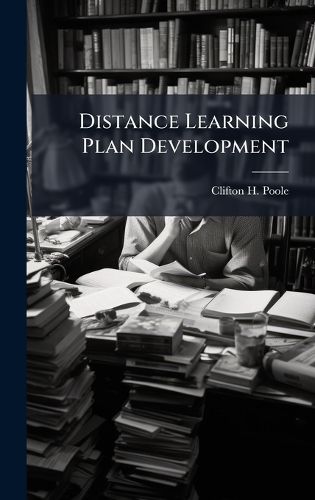Readings Newsletter
Become a Readings Member to make your shopping experience even easier.
Sign in or sign up for free!
You’re not far away from qualifying for FREE standard shipping within Australia
You’ve qualified for FREE standard shipping within Australia
The cart is loading…






This title is printed to order. This book may have been self-published. If so, we cannot guarantee the quality of the content. In the main most books will have gone through the editing process however some may not. We therefore suggest that you be aware of this before ordering this book. If in doubt check either the author or publisher’s details as we are unable to accept any returns unless they are faulty. Please contact us if you have any questions.
This thesis assessed the Army Distance Learning Plan and the current programs associated with implementing the current Army guidance for distance learning. The thesis set out to determine what requirements went into developing organizational structures and in doing so surveyed civilian educators and U.S. Army distance learning plan managers to examine the plans they were directing. The analysis showed that neither the Army nor the civilian distance learning plan managers used formalized requirements for organizational structure development. Instead, they developed distance learning plans and then established staffs that met the needs of the plan. The recommendations to the Command and General Staff College were to establish the climate to aid distance learning success, determine the organization structure by identifying the needs of the target populations of students, and to establish the criteria to design their distance learning plans. Designing the distance learning plans should only occur after organizational structures development and should be flexible enough to facilitate changes in the size, composition, and needs of the target audience. Last, the college must invest for the longevity of the distance learning plans by hiring key personnel to staff the organizational structures and manage the distance learning plans.
This work has been selected by scholars as being culturally important, and is part of the knowledge base of civilization as we know it. This work was reproduced from the original artifact, and remains as true to the original work as possible. Therefore, you will see the original copyright references, library stamps (as most of these works have been housed in our most important libraries around the world), and other notations in the work.
This work is in the public domain in the United States of America, and possibly other nations. Within the United States, you may freely copy and distribute this work, as no entity (individual or corporate) has a copyright on the body of the work.
As a reproduction of a historical artifact, this work may contain missing or blurred pages, poor pictures, errant marks, etc. Scholars believe, and we concur, that this work is important enough to be preserved, reproduced, and made generally available to the public. We appreciate your support of the preservation process, and thank you for being an important part of keeping this knowledge alive and relevant.
$9.00 standard shipping within Australia
FREE standard shipping within Australia for orders over $100.00
Express & International shipping calculated at checkout
This title is printed to order. This book may have been self-published. If so, we cannot guarantee the quality of the content. In the main most books will have gone through the editing process however some may not. We therefore suggest that you be aware of this before ordering this book. If in doubt check either the author or publisher’s details as we are unable to accept any returns unless they are faulty. Please contact us if you have any questions.
This thesis assessed the Army Distance Learning Plan and the current programs associated with implementing the current Army guidance for distance learning. The thesis set out to determine what requirements went into developing organizational structures and in doing so surveyed civilian educators and U.S. Army distance learning plan managers to examine the plans they were directing. The analysis showed that neither the Army nor the civilian distance learning plan managers used formalized requirements for organizational structure development. Instead, they developed distance learning plans and then established staffs that met the needs of the plan. The recommendations to the Command and General Staff College were to establish the climate to aid distance learning success, determine the organization structure by identifying the needs of the target populations of students, and to establish the criteria to design their distance learning plans. Designing the distance learning plans should only occur after organizational structures development and should be flexible enough to facilitate changes in the size, composition, and needs of the target audience. Last, the college must invest for the longevity of the distance learning plans by hiring key personnel to staff the organizational structures and manage the distance learning plans.
This work has been selected by scholars as being culturally important, and is part of the knowledge base of civilization as we know it. This work was reproduced from the original artifact, and remains as true to the original work as possible. Therefore, you will see the original copyright references, library stamps (as most of these works have been housed in our most important libraries around the world), and other notations in the work.
This work is in the public domain in the United States of America, and possibly other nations. Within the United States, you may freely copy and distribute this work, as no entity (individual or corporate) has a copyright on the body of the work.
As a reproduction of a historical artifact, this work may contain missing or blurred pages, poor pictures, errant marks, etc. Scholars believe, and we concur, that this work is important enough to be preserved, reproduced, and made generally available to the public. We appreciate your support of the preservation process, and thank you for being an important part of keeping this knowledge alive and relevant.